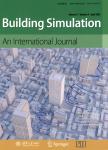Identifying spatiotemporal information of the point pollutant source indoors based on the adjoint-regularization method
作者机构:College of Urban ConstructionNanjing Tech UniversityNanjing 210009China
出 版 物:《Building Simulation》 (建筑模拟(英文))
年 卷 期:2023年第16卷第4期
页 面:589-602页
核心收录:
学科分类:0830[工学-环境科学与工程(可授工学、理学、农学学位)] 07[理学] 070602[理学-大气物理学与大气环境] 0706[理学-大气科学] 0701[理学-数学] 0812[工学-计算机科学与技术(可授工学、理学学位)]
主 题:regularization algorithm adjoint method CFD model inverse problem source retrieval
摘 要:Fast and accurate identification of the pollutant source location and release rate is important for improving indoor air quality.From the perspective of public health,identification of the airborne pathogen source in public buildings is particularly important for ensuring people’s safety and health.The existing adjoint probability method has difficulty in distinguishing the temporal source,and the optimization algorithm can only analyze a few potential sources in space.This study proposed an algorithm combining the adjoint-pulse and regularization methods to identify the spatiotemporal information of the point pollutant source in an entire room space.We first obtained a series of source-receptor response matrices using the adjoint-pulse method in the room based on the validated CFD model,and then used the regularization method and composite Bayesian inference to identify the release rate and location of the dynamic pollutant source.The results showed that the MAPEs(mean absolute percentage errors)of estimated source intensities were almost less than 15%,and the source localization success rates were above 25/30 in this study.This method has the potential to be used to identify the airborne pathogen source in public buildings combined with sensors for disease-specific biomarkers.



